Regardless of how long you’ve been biking, just about every rider has experienced that moment where they needed to check their tire pressure without a gauge.
Whether you’re miles deep into a Mountain Bike trail or hours deep in a group ride, it can be frustrating thinking you need to adjust your tire pressure.
This can be even more frustrating when you find out that you don’t have a tire gauge on you.
So what can you do? Do you continue riding or try to figure out how to get the right PSI?
In this article we will give you some tips to on how to check your tire pressure without a gauge, along with some tips to help you get it corrected.
If you don’t have a tire pressure gauge, you can check your bike tire pressure by; testing the feel, doing the pinch check, having someone visually check the sag, and even trying the puddle trick. This will help you get a rough estimate of how much pressure you have or need.
Just remember that this is temporary.
To help you get it figured out, we will go over just how you can check bike tire pressure without a gauge, along with some tips to get the best estimate.
As a preface, it is important to note that none of these methods will give you an exact reading.
For this reason, newer riders should try their best to find a tire gauge.
For more seasoned riders, you are more familiar with your bike and how your tires should feel.
Although you cannot get an exact measurement, you should be able to get very close to the correct PSI.
As you become an avid rider, you slowly start to become more and more familiar with your bike and how it rides.
This is a good thing when it comes to air pressure, as you can usually tell when your tires need air.
On the flip side, a seasoned rider can also tell when they have too much air in their tires.
An under-inflated tire will feel sluggish and hard to maneuver. You may even bottom out a few times riding over obstacles.
An over-inflated tire will feel too responsive, causing more dramatic movements and bouncing around more. You also will feel a significant loss in traction, making you feel less stable on the bike.
Even if you have a good feel for your bike, you will end up adjusting your tire pressure a few times before finding a good setting.
If you ever rode bikes growing up, you are probably familiar with this next one.
The thumb check, or pinch check is one of the oldest ways to check the air pressure in a bike tire without a gauge.
This check involves pinching the tire sidewalls, just above the rim, to feel for tightness.
Again, there is no way to tell exactly how much air you have in your tire, so you may end up adjusting the tire pressure a few times.
If you happen to be around another rider, you may be in luck.
It is hard to check the tire pressure in your bike, because as soon as you sit down, the tires flatten further down.
This is where that other rider comes in handy, as they are able to see how much the tires flatten while you’re riding.
Once they see how flat the tires look once your weights on the bike, they can help you add the right amount of tire pressure.
This next one is a bit “iffy” and I have never tried it myself, however, some riders say you can check your tire pressure by riding through a puddle.
Supposedly, the height that the water comes up to on the tire sidewalls will tell you if you need air.
Naturally, this involves riding pretty slow and you have to find a really short puddle.
If you have luck, please reach out to [email protected] so I can stop being so hard on this method.
For some of us, especially those avid riders, it is usually pretty easy to tell when your bike tires are low on air.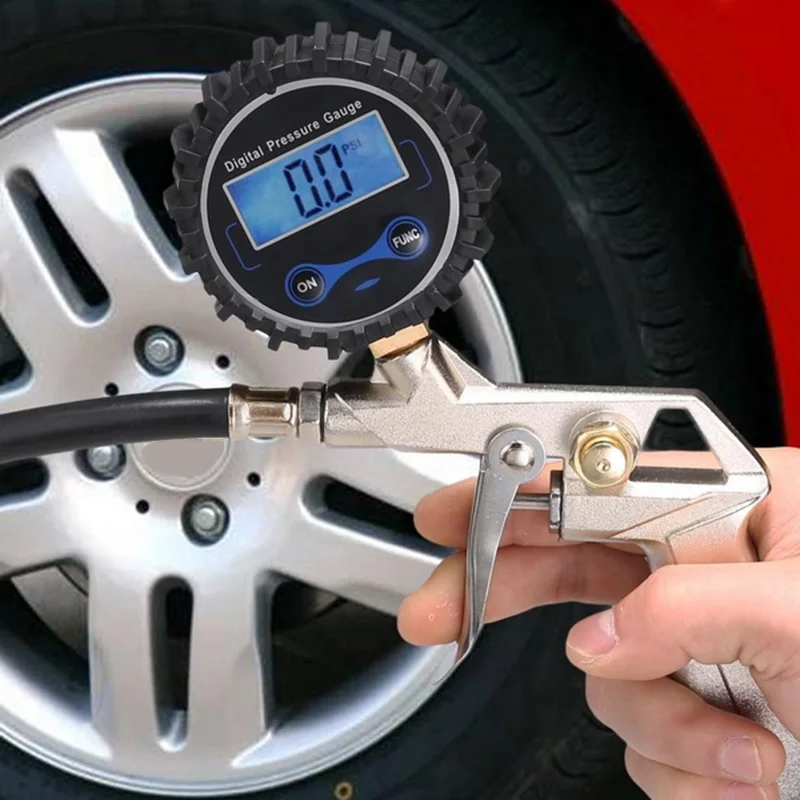
The real problem comes when you need to know when your tire has enough air.
In fact, most riders tend to over-inflate their bike tires – even when they have a tire pressure gauge.
So how do you know when you have enough air in your Bike tires?
If you don’t have a tire pressure gauge, you can check if you have enough air in your bike tires by; giving your bike a test ride, visually checking the sag, or pinching the tire for feel.
If you don’t have a tire gauge, one of the best ways to see if you have enough air in your bike tire, is to give your bike a test ride.
Of course, this is not an exact science, however, you will be surprised just how familiar you become with your bike.
With enough air pressure in your tire, your bike should feel tacky but responsive. If you feel lees stable than normal or a loss of traction, you probably have too much air in your tires.
If you have a friend or a great deal of patience, you can visually check the sag in your tires to see if you have too much air.
This works best if you’re a frequent rider, as you will have a good idea as what a tire should look like when you’re sitting down.
You may have to make a few adjustments, but this should get you in the right direction.
As I mentioned earlier in this article, the pinch method for checking a bike tire has been around for generations.
To see if your bike tire has too much air in it, pinch it on the sidewalls, just above the rim.
You should be able to pinch it inward a few centimeters before the resistance gets too strong.
If it is too hard to pinch straight away, you have way too much air in your bike tires.
No matter how experienced of a rider you are, we all put too much air in our bike tires at one point or another.
While this is easily corrected and usually no cause for alarm, it is still important to know what happens when you have too much air in your bike tires.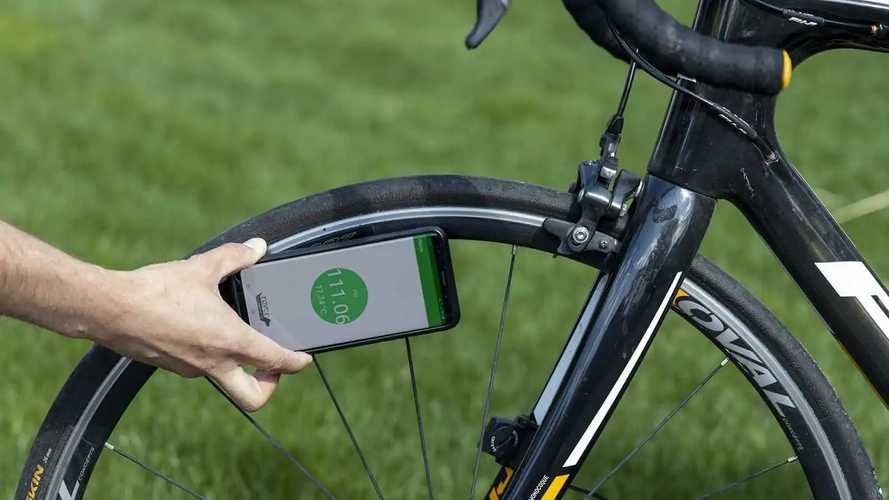
Here are the four main things that happen when you have too much air in your bike tires:
One of the first things that happens when you have too much air in your bike tires is that you have less rolling resistance.
This can actually be considered a good thing depending on the circumstance, but when your tire is over-inflated, this is bad.
Lower rolling resistance will make you faster and can help you more easily maintain speed.
But this only applies when you’re riding over flat and smooth surfaces.
Once you hit the slightest bump, more energy is wasted bouncing or pushing you in another direction, making you slower overall.
When your bike tire is over-inflated, you will notice a significant lass in traction.
Your bike tires are meant to deform a little to maintain optimal grip with the ground or surface.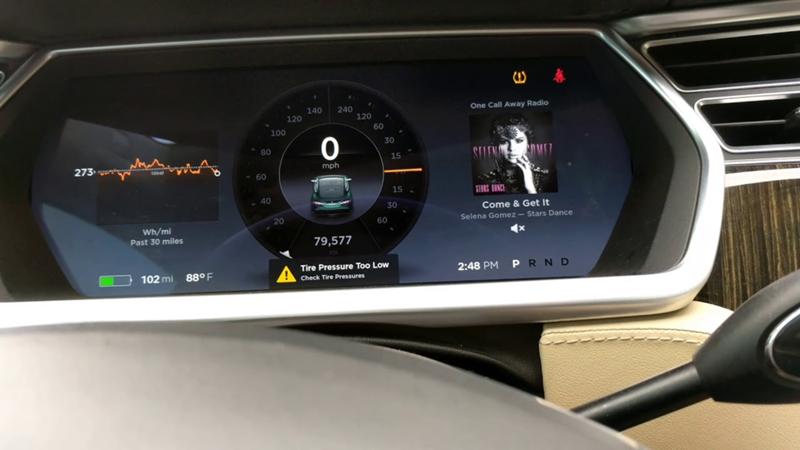
When they have too much air, they lose that ability to deform, making them less stable overall.
This is especially risky when you’re turning, as this is when you will have the least amount if tire in contact with the ground.
When your bike tires have too much air, they become tight and really stiff.
This can feel great at first when you notice how much more responsive your bike is.
But is also a real negative, as your bike becomes less stable overall.
In addition to the loss of traction, smaller bumps will feel more dramatic and it will be a lot easier to get bounced off the bike.
Finally, you run the risk of popping or damaging your tires or tunes when you have too much air in them.
Like I mentioned before, your bike tires are meant to deform a certain amount when you turn or go over bumps.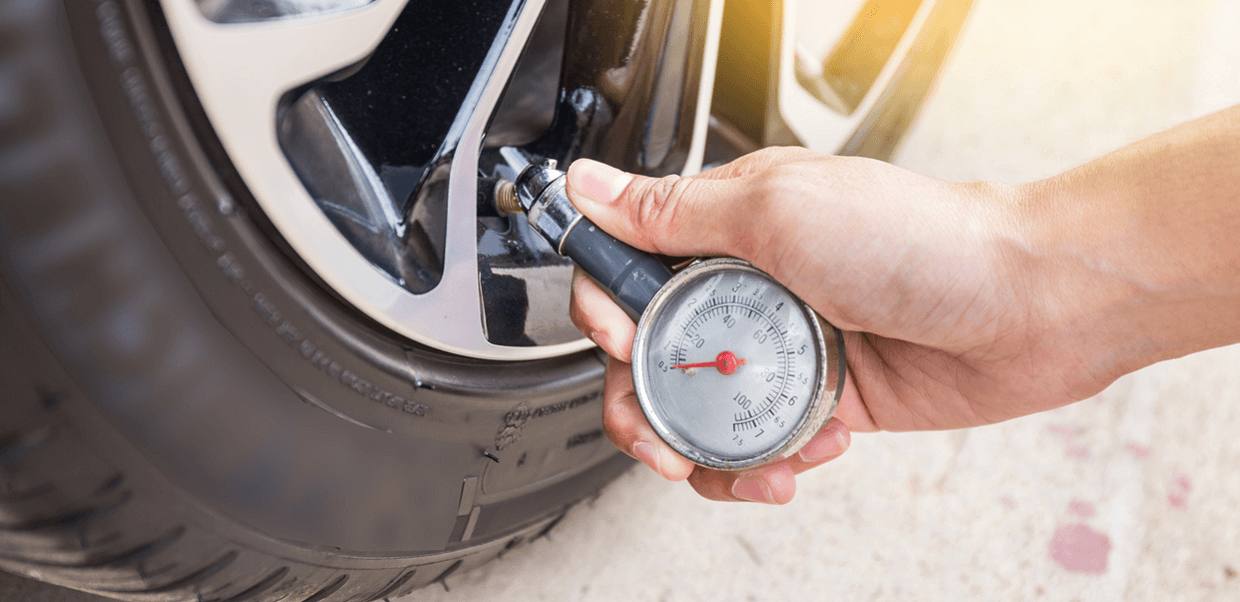
This not only helps maintain traction, it also allows your bike tires to offload all that air pressure when you’re putting a lot of weight on your bike.
When you have too much air pressure in your bike tires, your tires no longer deform when you hit a bump or shift your weight.
This results in a constant force of high air pressure pushing against your tires and tubes, making them more prone to pop or tear.
In conclusion, there is no way to guarantee that you have too much air pressure in your bike tires without a gauge.
However, with a little patience and a good familiarity with your bike, you can recognize the telltale signs.
Use this article as guide to help you familiarize yourself with your bike, as well as a resource to help you check if you have too much air in your tires.
Good luck and safe riding!
Whether you’re road biking, hitting single-track trails on a mountain bike, or going for a casual stroll on a hybrid or cruiser, tire pressure is one of the most important aspects to pay attention to, regardless of when or where you’re riding.
Your tires are the only thing between you and the ground, so it's always best to be sure that they are inflated properly for your current riding situation and preferences.
If you ride on even a somewhat frequent basis, you need to be checking your tire pressure on a consistent basis. This almost always includes the use of an actual tire pressure gauge so you can be precise with things.
However, it’s safe to say that you may not always have a tire pressure gauge on you during certain riding situations, so you need to be able to at least provide an estimate without using any kind of tools.
Below, we’ll go over how to check your tire pressure, both with and without a tire pressure gauge.
Regardless of what type of bike you’re riding, the tires will always have a specific range on the side of them for you to reference. First, find this range before using a gauge or inflating.
First, find this range before using a gauge or inflating.
Once you know the psi range, use your tire gauge by placing it on the valve and pressing down, causing the needle on the gauge to move and display the pressure. Alternate between the air pump and gauge until you reach the desired pressure.
To make things easier, get a pump with a built-in gauge.
While you may not be able to get a precise readout of tire pressure without a gauge, there are still some ways you can improvise.
If you are on a road bike, you can simply squeeze the tire on each side. If there is a lot of giving, inflate until you can barely squeeze it.
For a mountain bike, get on the bike and look down. If you see the tires protruding out on each side more than a millimetre or two, you’ll need to add air.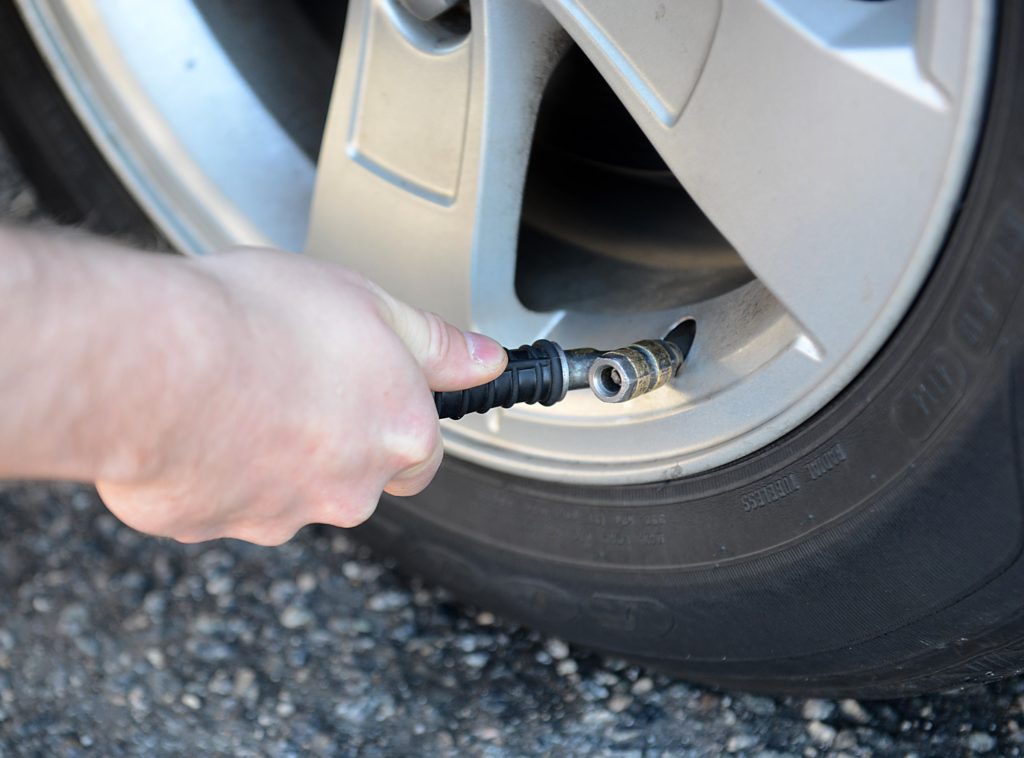 If they feel rock hard and offer no give, you need to relieve some of the air out.
If they feel rock hard and offer no give, you need to relieve some of the air out.
Different types of bike tires require different pressures. As a general rule of thumb, road tires usually need 80 to 130 psi, mountain bike tires require about 25 to 35 psi, and hybrid tires, 50 to 70 psi.
Weather can play a factor in your tire pressure as well. For instance, each 10-degree-Fahrenheit drop in outside temperature correlates to a 2 percent drop in tire pressure. An example of this would be the outside temperature dropping from 90 degrees to 60 degrees, which means your road tire pressure would drop from 100 psi to 94 psi.
Also, the surface you’re riding on plays a factor too. If you’re on a road bike, and you are riding on a very smooth road, you can keep the psi up to a maximum level. Rougher roads will require a slight drop in pressure to offer a smoother ride.
Rougher roads will require a slight drop in pressure to offer a smoother ride.
If you’re on a mountain bike and you are going to be tackling some adventurous single-track that has uneven surfaces and plenty of sand and dirt, dropping your psi a bit can give the bike better traction and grip.
Bodyweight is another factor. Let’s say that a 165-pound rider uses 100 psi on his road bike. With that point of reference, a 200-pound rider inflates to around 120 psi, while a 130-pound rider could probably ride as low as 80 psi.
In any situation, never go above or below the manufacturer's recommended tire pressures.
Road bikes and tires are designed to go fast on flat ground. Higher air pressure allows them to roll more easily and quickly. These typically have a pressure range of 80 to 130 psi, while racers might go as high as 160 psi. If you're stuck inflating a road tire without a gauge and need to guess, a tire can barely be compressed with your thumb at 100 psi.
These typically have a pressure range of 80 to 130 psi, while racers might go as high as 160 psi. If you're stuck inflating a road tire without a gauge and need to guess, a tire can barely be compressed with your thumb at 100 psi.
Mountain bikes, unlike road bikes, fly over rough, uneven terrain. Too much air in the tires causes too much bounce, resulting in a jarring ride. Lower tire pressure improves shock absorption while also increasing traction by allowing more of the tire to make contact with the ground. Most MTB manufacturers recommend a tire pressure of 30 to 50 psi because it is a good compromise between on-road (closer to 50) and off-road (near to 30) riding.
Hybrid bicycle tires must be inflated to a pressure that is halfway between that of a road bike and that of a mountain bike. This is normally between 50 and 70 psi.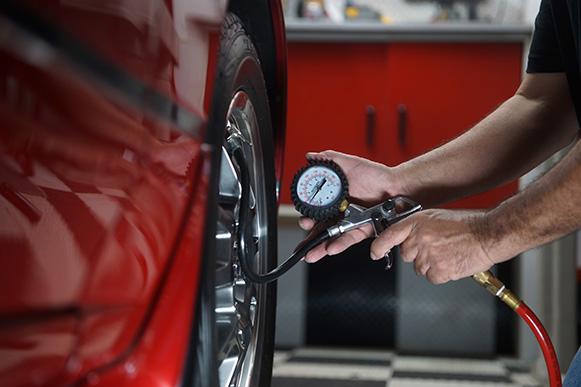 The lowest suggested inflation for children's bikes is 20 to 40 psi. But keep in mind that these are referred to as "recommendations" for a reason. Beyond your bike's style, a number of elements play a role in the inflation process.
The lowest suggested inflation for children's bikes is 20 to 40 psi. But keep in mind that these are referred to as "recommendations" for a reason. Beyond your bike's style, a number of elements play a role in the inflation process.
Temperature impacts air pressure, as we know from physics. Aside from the weather, persistent deceleration with rim brakes causes friction, which can considerably raise temperatures inside the tube. Fortunately, they cool off rapidly as well, but it's something to be aware of on long descents. It's also something to say to your budding roadster when he or she learns the fundamentals of hand braking.
As a rule of thumb, more weight equals more pressure. To see the same performance in their tires, heavier riders should utilize a greater psi than lighter riders, whether they're competing in the Tour de Whatever or tearing up the backwoods. To put things in context, someone who weighs 200 pounds will probably want to pump in roughly 20 psi more than someone who weighs 160 pounds. There isn't a certain sliding rule for this, so experiment with the pressure to determine what works best for you. Keep in mind that rear tires tend to carry more weight than front tires, so make any required adjustments.
To put things in context, someone who weighs 200 pounds will probably want to pump in roughly 20 psi more than someone who weighs 160 pounds. There isn't a certain sliding rule for this, so experiment with the pressure to determine what works best for you. Keep in mind that rear tires tend to carry more weight than front tires, so make any required adjustments.
A popular question among casual bikers is "How often should I inflate my tires?" The answer is contingent on how frequently and how hard your bike is. Some people use the pump every few days, while others use it once a week, and yet others use it even less frequently. Even if you or your kids have been leaving your wheels in the garage for months, air will eventually seep out. As a result, just like a car, it's always a good idea to inspect your tires before each trip as a bike safety best practice. It's especially important if it's been a while.
In a nutshell, don't do both.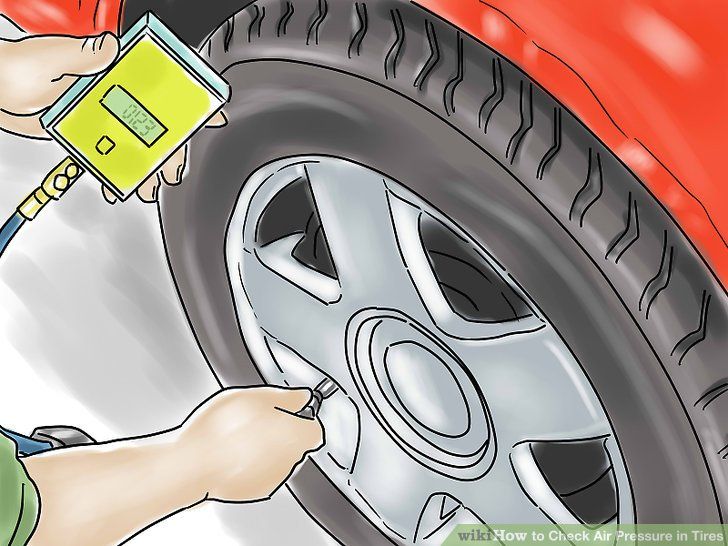 You run the risk of blowing the tube if you overinflate it, either during pumping or while riding, due to sudden or constant contact. Pinch flats can occur if the tire is underinflated. When you hit a bump with an underinflated wheel, the tube gets compressed between the rim and the tire casing. This not only harms the tire, but it can also harm the rim. Flat tires also slow you down and force you to pedal harder, which is not fun.
You run the risk of blowing the tube if you overinflate it, either during pumping or while riding, due to sudden or constant contact. Pinch flats can occur if the tire is underinflated. When you hit a bump with an underinflated wheel, the tube gets compressed between the rim and the tire casing. This not only harms the tire, but it can also harm the rim. Flat tires also slow you down and force you to pedal harder, which is not fun.
There are two types of bike pumps
Hand pumps are necessary for each avid cyclist, but they are more difficult to use and take longer to fill the tire. However, because they're portable, you'll always have your pump with you. Any long-distance bike trip would be silly if you didn't have your trusty hand pump and puncture repair kit.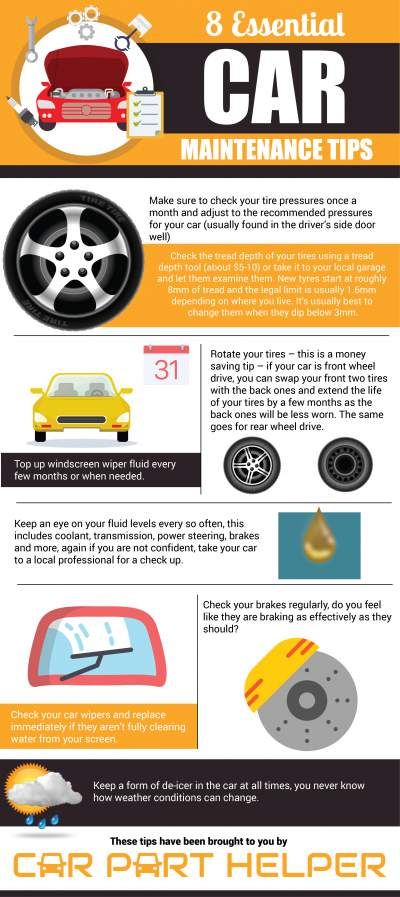
Floor pumps are the professional's pick since they work so well. They're easier to use and connect, and they'll fill your tires up considerably faster than a manual pump. Some come with gauges, which eliminate
1) The need to switch between a pump and a standalone gauge, or
2) Sheer guesswork if you're really lazy.
Expert bikers, on the other hand, are wary of floor pumps with gauges because the gauge's accuracy varies and can be off by as much as 10 PSI. On the bright side, if the gauge is constant, you can compute the difference and compensate by adjusting your goal PSI.
It’s worth saying again: Tire pressure is crucial. While we strongly recommend that you purchase a tire gauge, learning how to estimate tire pressure by look and feel can come in handy for the times you may be without. Either way, always be vigilant with your tire pressure.
Bicycles.StackExchange
LiveStrong
A bicycle is a well-thought-out and reliable device. But with improper operation, even the highest quality of its elements and systems can fail faster than it would happen naturally. Last but not least, it concerns the wheels. For example, on how the pressure in the chambers of the bike corresponds to a certain norm , not only comfort during rides, but also the life of the tires will depend.
If you constantly ride wheels with less than optimal pressure, chances are that cracks have already formed on the sidewalls of your tires. This usually leads to their premature erasure. Excessively high pressure increases the risk that the tire will simply burst at the most inopportune moment.
Children's bikes are available with delivery to your region! Big choice. Best price guarantee.
This is a controversial question, the answer to which depends on many factors . First of all, this is the intended terrain on which you plan to ride and the "profile" of the bike. High pressure is preferable if you're riding on tarmac as it gives you excellent rolling, while low pressure gives you solid traction on rough terrain. The style of riding and the weight of the cyclist also matter.
First of all, this is the intended terrain on which you plan to ride and the "profile" of the bike. High pressure is preferable if you're riding on tarmac as it gives you excellent rolling, while low pressure gives you solid traction on rough terrain. The style of riding and the weight of the cyclist also matter.
Tire manufacturers usually indicate the limits within which the cyclist can vary the inflation of the wheels . In our country, pressure is usually measured in atmospheres (at). This value is approximately equal to such a unit as Bar, which is common in Europe. On American tires and products intended for the American market, the allowable pressure is indicated in Psi.
Available mountain bikes with delivery to your region! Big choice. Best price guarantee.
Some average tire pressure for a road bike designed for riding on good, smooth roads is 6.46 - 9.18 atmospheres. For a mountain bike, this figure varies from 2.38 to 4.08 atmospheres. For off-road driving, the optimal pressure will be from 2. 38 to 3.26 atmospheres.
38 to 3.26 atmospheres.
As for the variation within the “limits of what is permitted”, in summer it is advisable to adhere to the lower limit so that the air in the chambers, heating up and expanding, does not damage it. In winter, on the contrary, a chamber pumped up to the upper limit will allow the treads on the tires to adhere more tightly to the surface. The pressure in the chambers must also be correlated depending on the rider's weight . Experts believe that approximately 1% should be added to the average value for each kilo of cyclist weight over 50.
The pressure should also depend on the type of rubber . So, slicks or semi-slicks need to be pumped up almost to the maximum, because they are designed specifically for the maximum diameter. In hot weather, they are allowed to be under-inflated by about a quarter. Cross-country tires are 2-2.3 inches wide and can withstand three to four bar tire pressure. Extreme tires need to be inflated to about average, but for each descent or trick, this value must be varied subtly.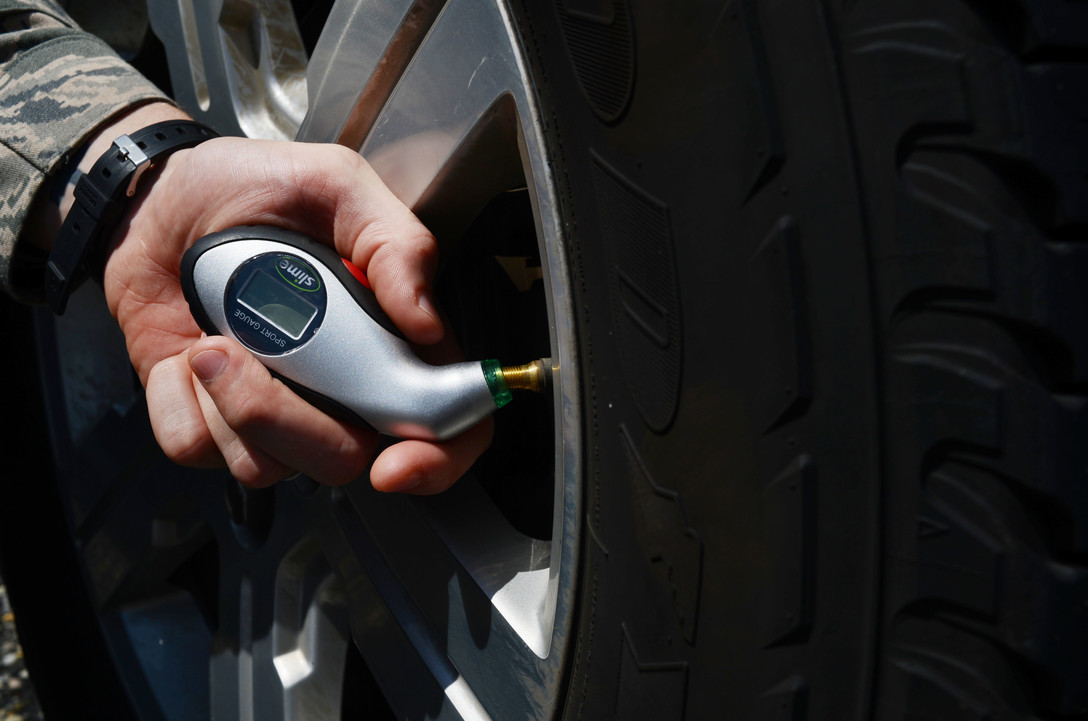
You can measure the pressure in the bicycle chambers using the pressure gauge , on which the atmosphere scale is located. It can be bought separately, or together with a bicycle pump, for example, at VeloSklad. It is also possible to measure the pressure manually, but it is quite difficult to do this, since even with a slight inflating of the chambers, they are already poorly “palpable” with your fingers. It is believed that if the chamber does not shrink under the fingers, then the pressure is normal. But this is an inaccurate method, since everyone's hand strength is different. This art is available, perhaps, only to really experienced cyclists. More accurate data will be told to you at the nearest bicycle service or service station. Experienced cyclists suggest "remember", how many times you need to pump the chamber with your pump to get the optimum pressure.
It is advisable to regularly inflate the wheels and control the pressure in the chambers, since air is lost not only through the nipple, but also through the rubber itself. Road bikes and sports bikes need to be pumped up before each ride, road bikes need it at least once a week, mountain bikes once every two weeks, and city bikes no more than once a month. If you regularly monitor the pressure in the chambers, you will extend the life of your bike.
Road bikes and sports bikes need to be pumped up before each ride, road bikes need it at least once a week, mountain bikes once every two weeks, and city bikes no more than once a month. If you regularly monitor the pressure in the chambers, you will extend the life of your bike.
contents
" presión tires should be 10% of the rider's weight plus the weight of bike ". For example, a cyclist weighing 68 pounds with bike 8 kg adds 76 kg, with which his presión should be 7.6 bar.
Esta pressure drop can be 15-20%, i.e. yes you inflate your tire at 100 psi, the rim of this less weight should be obtained inflated from 80 to 85 psi. Bad tire pressure can that rim wear out faster by having it that replaced before.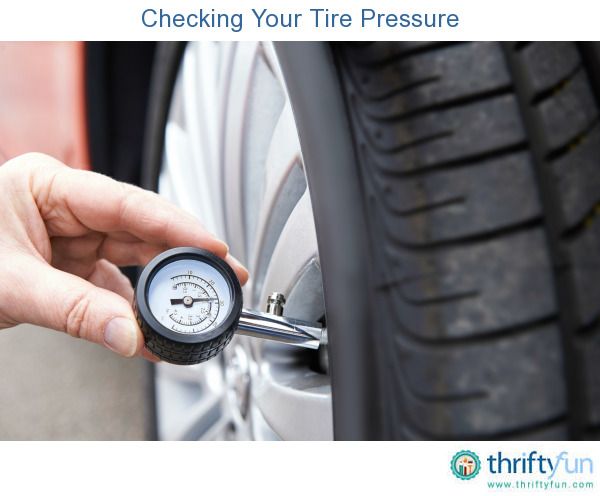
Mountain bike tire pressure chart
| Tire width (inches) | ||
|---|---|---|
| 70 kg | 2.1 bar / 30 psi | 1.8 bar / 26 psi |
| 80 kg | 2.2 bar / 32 psi | 1.9 bar / 27 psi |
| 90 kg | 2.3 bar / 33 psi | 2 bar / 29 psi |
| 100 kg | 2.4 bar / 35 psi | 2.1 bar / 30 psi |
For example: " 26 ×1.5 45-60” PSI , indicates that this wheel is aro 26 (inches) with a width of de 1.5 (inches) and a pressure of de recommended air 9005 in 9005 60 PSI
For example wide MTB tires typically use 25 to 30 pressures PSI Intermediate covers common on bikes hybrid and bikes gravel, requires 40 to 70 PSI .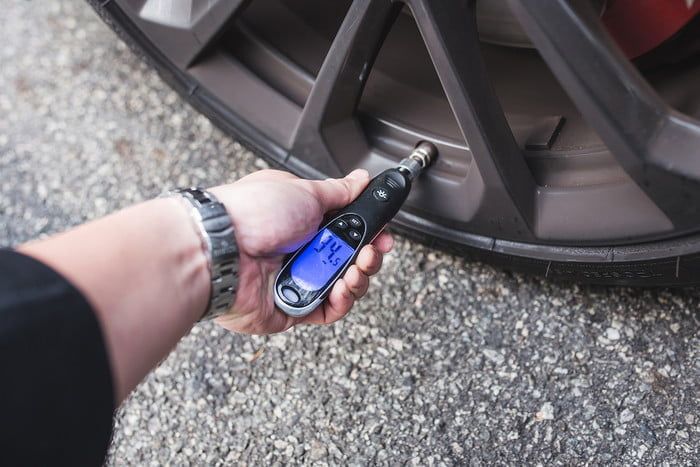 Narrower rims common on bikes on the route, they generally recommend 80 to 130 PSI pressures.
Narrower rims common on bikes on the route, they generally recommend 80 to 130 PSI pressures.
pressure se is designed for an average weight of approx. 75 kg. bikes for folding trucks with 16" to 20" wheels typically 60 to 120 psi (4 to 8 bar) compared to 35 to 65 psi (2.5 to 4.5 bar) for bike traditional (city, mountain, hybrid…) from 26-28″.
Use Schrader valve (also called "American valve" or "Automotive valve"). This system consists of a central rod surrounded by a core. To press the rod, you will need a tool to help you release the air. Valves are usually wider than Presta or Woods valves.
The answer is simple.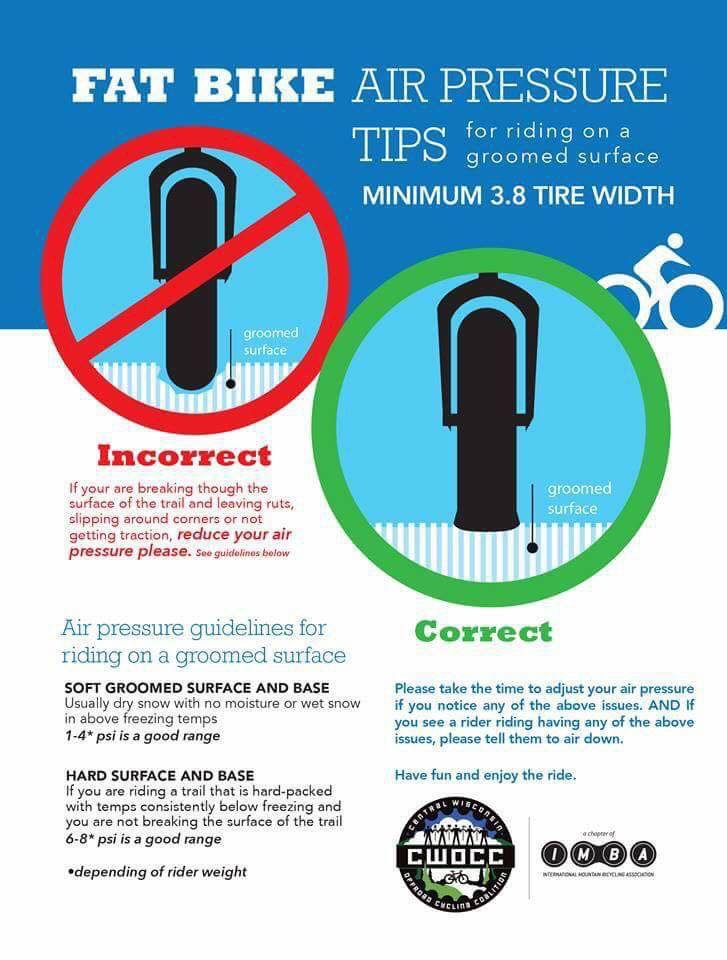 It's just a question de nat. Pressure de cover bicycle is reduced due to composition district judges containing nitrogen and oxygen. Know that a flat tire is not always synonymous with de prick.
It's just a question de nat. Pressure de cover bicycle is reduced due to composition district judges containing nitrogen and oxygen. Know that a flat tire is not always synonymous with de prick.
yes . Severe overpressure will cause the tire to blow off and come off the llanta or even explode. Si this happens at the time of bike , an accident may occur.
Indicative pressure chart
Wide chamber tires (2.3 and up): 28 to 30 psi - 1.9 to 2.1 BAR. Wide tubeless tires (2.3 and up): 26 to 28 psi - 1.7 to 1.9 BAR. Thin tubeless tires (2.25 or less): 27 to 28 psi - 1.8 to 1.9bar.
Given these prerequisites, the steps to be taken to measure presión - gold consumer goods tires are as follows: Carefully remove the cap.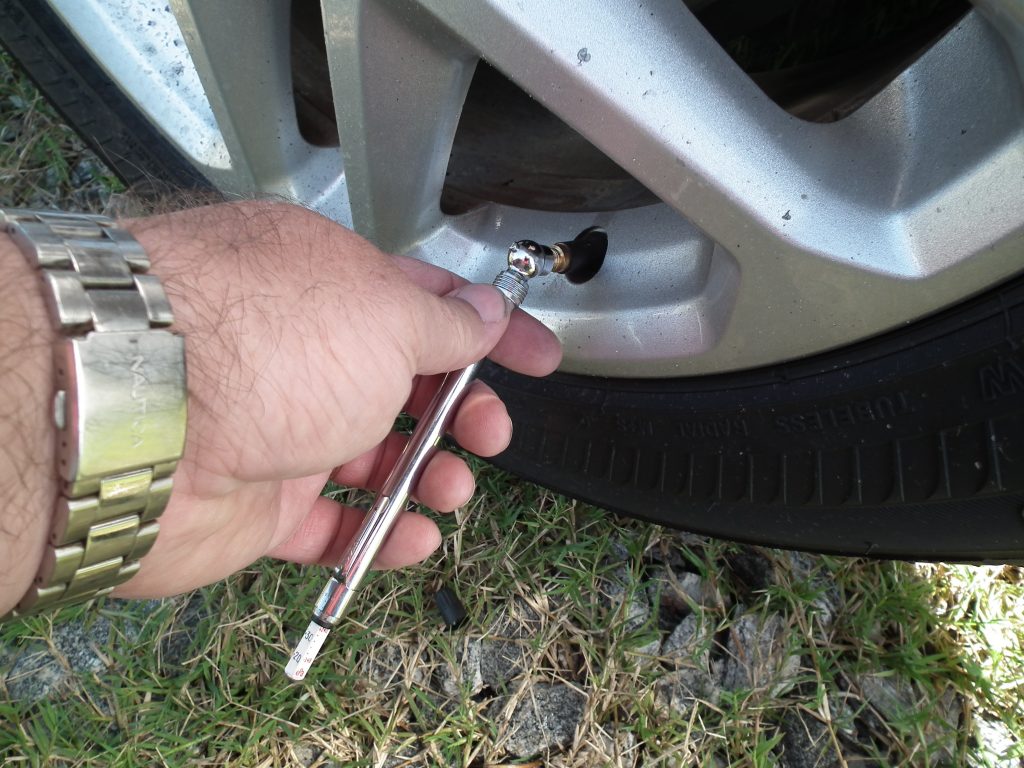 Connect the pressure gauge hose to the wheel hub, you will hear air coming out. Then you will see a reflection on the gauge of the amount of air that is in the wheels.
Connect the pressure gauge hose to the wheel hub, you will hear air coming out. Then you will see a reflection on the gauge of the amount of air that is in the wheels.
BIKE AIR PUMP PRICES IN LINIO MEXICO 2021
| BIKE AIR PUMP | PRICE (MXN) |
|---|---|
| Bomb Portable Portable Tramontina 43132/002 for Bicycles 90 PSI | $180.00 |
| Xiaomi Mijia Smart Digital Tire Pressure | $989.00 |
| Xiaomi Mijia Air Pump Xiaomi Pump Electric Inflator - Black | $959.00 |
Best air pumps for bike from 2021
